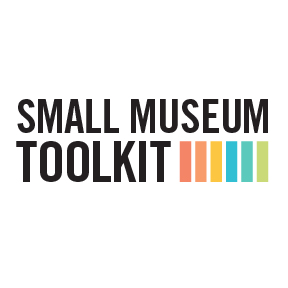 |
| Getting the answer to this question is goal of the fourth sector. |
Lucky for small museum folks, there are three organizations who want to
help you in this effort and propel you to meet best practices. The American
Association for State and Local History, the American Alliance of Museums, and Heritage Preservation have
developed assessment tools that help you put work in perspective, educate board
and staff, kick start planning, and provide funding leverage.
The Standards and Excellence Program for History Organization (StEPs) “is a voluntary assessment program for small- and mid-sized history organizations. The program, created by AASLH with funding from the Institute of Museum and Library Services (IMLS), encourages awareness and achievement of national standards.” This self-directed assessment process is a great way to get the ball rolling.
If you feel like the opinions of an
outside professional and a more intensive self assessment process is what your
organization needs, then you should look at MAP and CAP.
The Museum
Assessment Program (MAP) “helps small and mid-sized museums strengthen
operations, plan for the future and meet national standards through self-study
and a site visit from a peer reviewer. IMLS-funded MAP grants are
non-competitive and provide $4,000 of consultative resources and services to
participating museums.”
Heritage Preservation’s Conservation
Assessment Program (CAP) “provides a general conservation assessment of
your museum's collection, environmental conditions, and site. Conservation
priorities are identified by professionals who spend two days on-site and three
days writing a report. The report can help your museum develop strategies for
improved collections care and provide a tool for long-range planning and
fundraising.” CAP provides over $7,000
in consultative resources and services, sending a conservator and historic
preservation professional (if applicable) on site.
Ultimately, with an assessment in
hand and an organizational commitment to keep moving forward, you will have
board, staff, and volunteers on the “same page” which promotes efficiency and
strengthens your chances for successful implementation of goals. You also have a good benchmark to help you
see when you’ve arrived at a goal. You
can look back and demonstrate for others where you’ve been which will fuel the
new momentum you have.
And, you have a case to make to
funders. Do you need collections storage
shelving? A new computer? Funding for a
museum educator? Any one of these formal
assessments offers excellent justification in a grant application, foundation
proposal, or case statement for a potential donor.
With just one of these formal assessments
in hand, you will know what kind of institutional planning you need – strategic
or operational – and you will have a sense of what planning time frame you
need. To take the next planning steps,
read “DIY Strategic Planning” in the Small
Museum Toolkit, or tap the rich library of planning publications. Here are a few to get you started. Good luck!
Recommended Resources
Bryson, John M. and Farnum K.
Alston. Creating and Implementing Your Strategic Plan: A Workbook for Public and Nonprofit Organizations, 2nd Edition. San Francisco: Josey-Bass, 2005.
How To Do Traditional Brainstorming
Lord, Gail Dexter and Kate Markert. The Manual of Strategic Planning for Museums. Lanham, MD: Altamira Press, 2007.
Merritt, Elizabeth E. and Victoria
Garvin, editors. Secrets of Institutional Planning. Washington, DC: American Association of Museums, 2007.
McNamara, Carter. Field Guide to Nonprofit Strategic Planning and Facilitation. Minneapolis: Authenticity Consulting, LLC, 2003.
Skramstad, Harold and Susan
Skramstad. Handbook for Museum Trustees. Washington, DC: American Association
of Museums, 2003.
Working in museums for nearly 20 years, Cinnamon Catlin-Legutko has been a museum director since 2001. Cinnamon became CEO of the Abbe Museum in Bar Harbor, Maine in 2009. Before that, she was the director of the General Lew Wallace Study & Museum in Crawfordsville, Indiana, where she led the organization to the National Medal for Museum Service.

